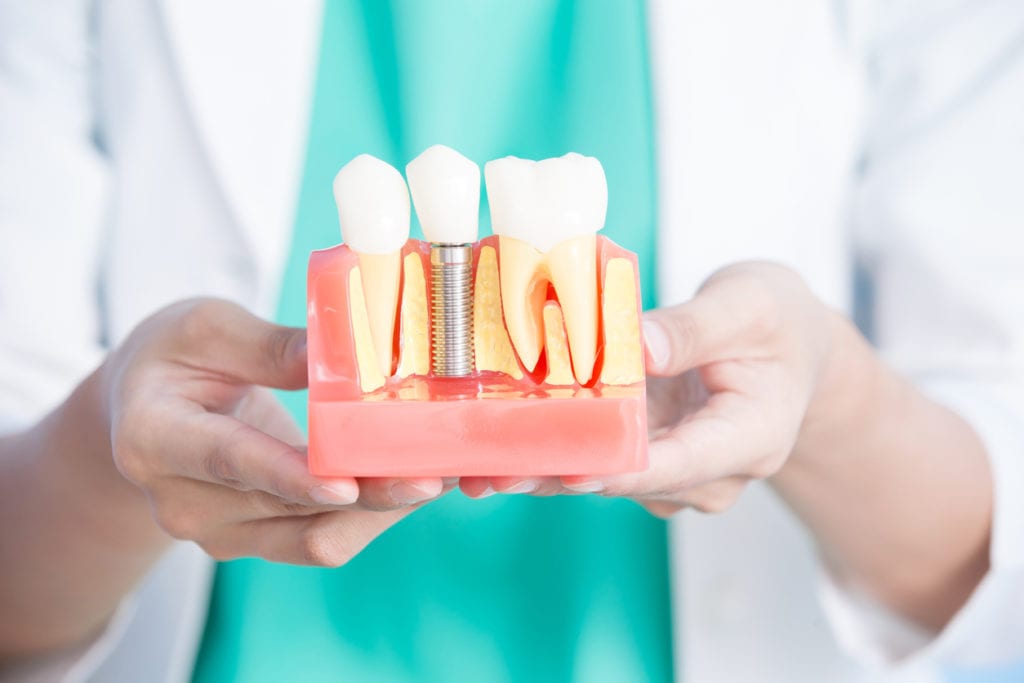In the jaw, bone loss is a prevalent issue. Patients who require dental implants but have bone loss frequently have a bone grafting treatment, which can lead to a protracted healing period before implants can be inserted. But are there any alternatives to bone grafting? Parkland dental implants can help you get your ideal smile.
Why Does Jaw Bone Loss Occur?
Bone disappears when teeth are lost or extracted. Alveolar bone, which forms the ridges that assist teeth to stay lodged, surrounds and supports teeth.
- Periodontal Disease – When periodontitis is present, bone loss may start before tooth loss. The periodontal ligaments that hold the tooth to the bone and the underlying jawbone can both be slowly destroyed by bacteria. The tooth might well be lost after these erode, and the resorption worsens.
- Smoking – Using cigarettes impairs your body’s defenses against infection, increasing your chance of gum infection and frequently escalating periodontal disease.
- The alveolar bone needs constant stimulation from chewing pressure due to teeth misalignment. Some teeth are not properly stimulated during chewing when teeth are out of alignment, which causes bone loss.
- Dentures – Because they rub against the gums, dentures can accelerate bone loss.
Are Bone Grafting Alternatives Available?
A single prosthetic tooth’s stability depends on the implant that supports it. Bone grafting could be the only sensible choice when a bone is absent in these specific locations.
- As little as 4-6 implants can secure a complete arch prosthesis to the jaw, combining to offer adequate reinforcement.
- Zygomatic Implants – These implants are implanted in the zygoma (cheekbone) instead of the jawbone and are lengthier than conventional implants. The zygoma is substantial and robust enough to support the implant.
- Dental implants – Having dental implants installed as soon as a tooth is out is the most popular and reliable way to stop bone loss.
- Grafting matter can be introduced to the tooth socket to assist in maintaining the bone and decrease the pace of resorption if you are incapable of having dental implants inserted following a tooth extraction.
What Is the Process of Bone Grafting?
In dental bone grafting operations, the jawbone is exposed, and bone material is inserted into it. This surgery is typically carried out to provide a dense, substantial foundation for the implantation of a dental implant.
Unfortunately, it takes a few months for a bone transplant to cure even before the implant can be inserted. Some oral surgeons combine platelet-rich plasma (PRP) therapy with bone grafting operations, which involves injecting the patient’s plasma into the surgical site. PRP therapy promises to hasten the healing process.
Are Bone Grafting Alternatives Available?
- A single prosthetic tooth’s stability depends on the implant that supports it. Bone grafting could be the only sensible choice when a bone is absent in these specific locations.
- As little as 4-6 implants can secure a complete arch prosthesis to the jaw, combining to offer adequate reinforcement.
- Zygomatic Implants – These implants are implanted in the zygoma (cheekbone) instead of the jawbone and are lengthier than conventional implants. The zygoma is substantial and robust enough to support the implant.






More Stories
Shockwave for ED vs. Traditional treatments – A comprehensive comparison
Effective Ways to Manage Spinal Curvature in Adolescents
Enhance Your Culinary Experience: Pairing Cannabis Strains with Local Flavors